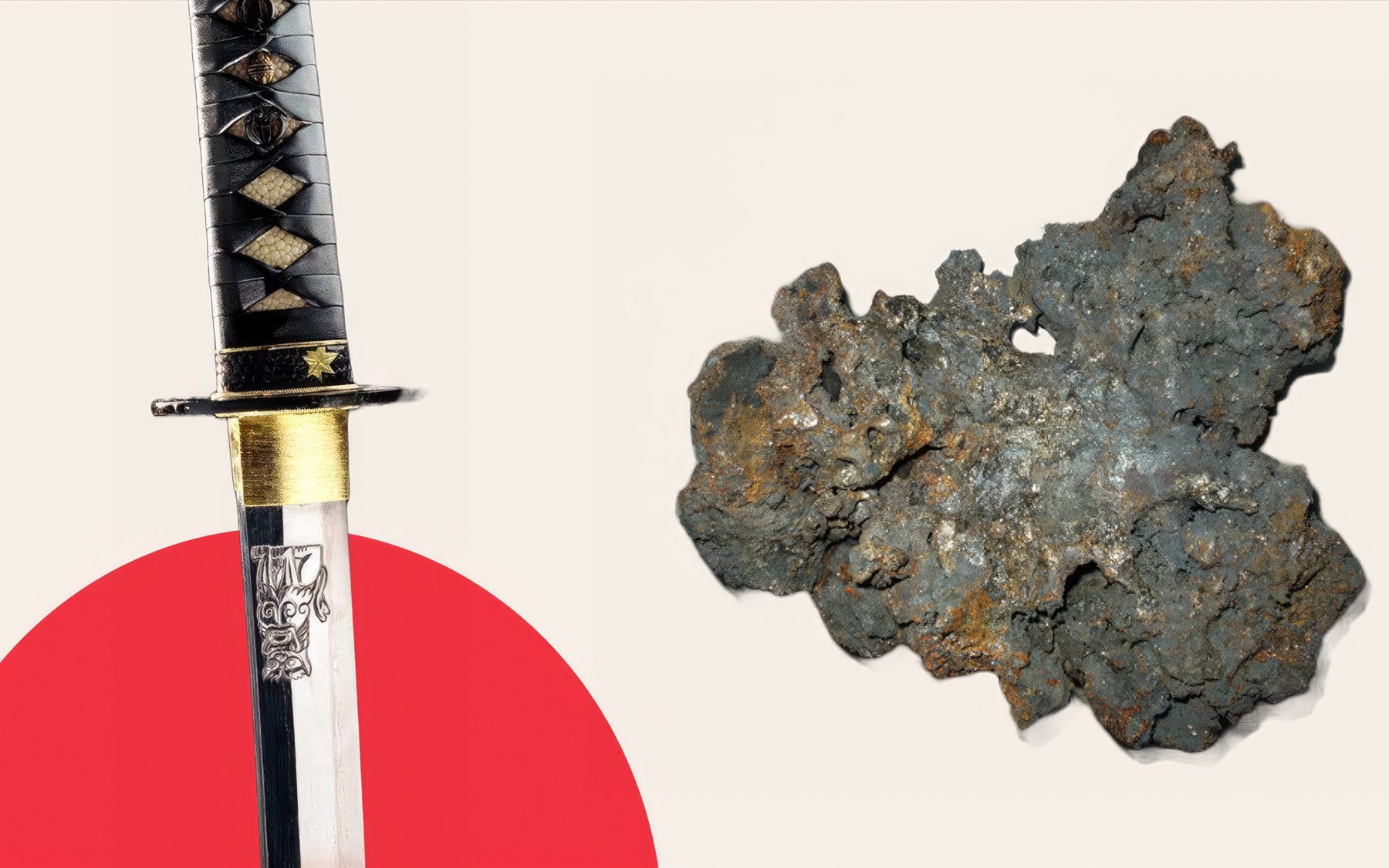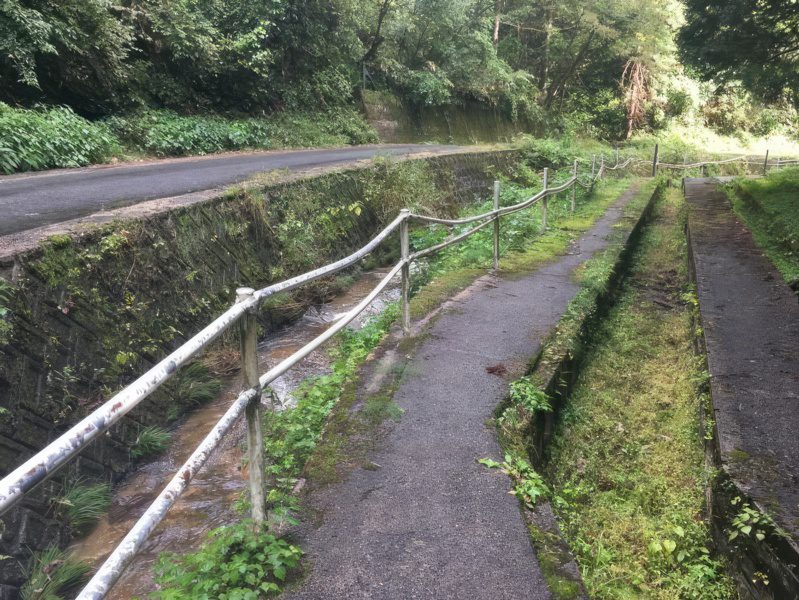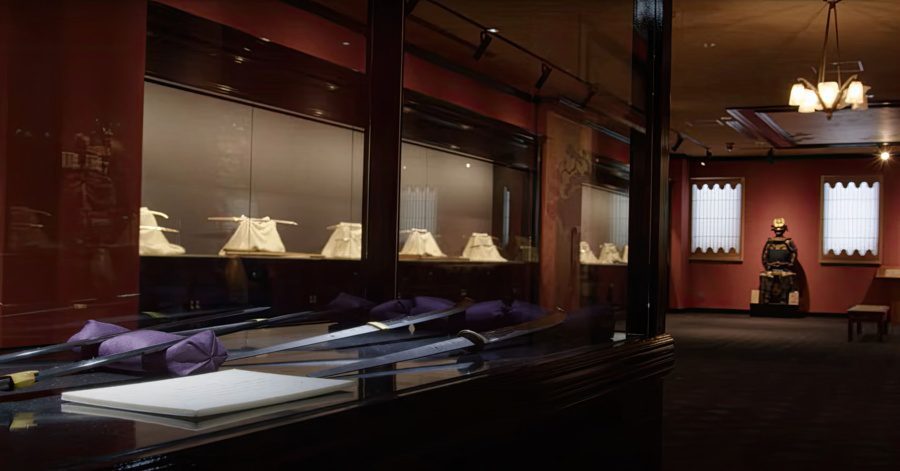Is Tamahagane the Best Steel for Swords?

What’s in this article?
Step into the enchanted world of Tamahagane steel, a magical alloy that captures the spirit of traditional Japanese art and legend. This remarkable material has captivated the imaginations of craftspeople and sword enthusiasts for generations, and its history is steeped in culture and veiled in folklore.
Tamahagane steel was the chosen metal of the Japanese Samurai, the result of years of experimentation by swordsmiths who sought to create a metal that would outperform all others.
But did it?
This article will move away from the romanticized tale of Tamahagane and into the world of hard facts. Determine whether or not Tamahagne steel is the best steel for swords by learning about its history, manufacturing process, properties, and whether or not it is still being produced today.
Tamahagane Steel – What Is It?

Tamahagane steel (玉鋼) is a blade material used to create the popular Samurai Sword of Japan. It comes from an iron sand called satetsu, which has been collected in history and is found in the Southern Japanese regions of the Shimane Prefecture today. This region has the only historical furnace, called tatara, considered to be preserved for more than 1000 years.
The word Tamahagane directly translates to precious steel, tama meaning precious, and hagane meaning steel. Tamahagane steel can be grouped into two different categories; the Masa Satetsu and the Akame Satetsu. They differ by the percentage of iron ore and carbon that can be converted into steel. However, the Masa is of higher quality.
The Japanese have had difficulty finding iron ore throughout history and even today because most deposits are beneath the water’s surface around the archipelago. What Japan does have in abundance, however, are volcanoes. These volcanoes have plenty of basalt and granite rocks which have been worn down into grains after a millennium of erosion. That is why the Japanese swordsmiths started creating blades out of this iron sand.
The reason why the Tamahagane is considered to be a choice steel is because of the process of turning dust into a functional and deadly blade. This status, along with the many legends and Western admiration for the Samurai warriors, has given rise to Tamahagane being a one-of-a-kind blade.
From Iron Sand to Tamahagane Blade
The process of converting iron sand found in Japanese rivers, coasts, or hills into the deadly Samurai blades we know today is a very long and polished tradition that improved with each generation. Here we shall present you with the important process of how Tamahagane Blades came to be.
1. Collecting Iron Sand
Iron-bearing river sand or dust is collected by digging silts from certain regions, then washing and cleaning the mud or sand from it. This washing is done until only the purest iron sand remains. Roughly 25 tons of this river sand will be placed into the mouth of a tatara, a rectangular clay furnace specifically created to produce Tamahagane steel.
The tatara is always destroyed at the end of a Tamahagame creation process. For the iron to be smelted into different stages, it must be covered completely where it sinks to the bottom of the tub-like furnace.
2. Smelting

The tatara will be lit, reaching temperatures of up to 2,500°F (1400 ºC), reducing the iron ore to steel and yielding high quantities of Tamahagane. This is done by traditional methods of creating charcoal called sumi, which has carbon. The Tamahgane here can be split into purer versions of higher impurity. The high-quality Tamahagane is used for making high-quality swords.
The Tamahagane is never allowed to reach a molten state as it allows blacksmiths to ensure that the right amount of carbon can enter, varied with a composition of 0.5% to 1.5%. Two types of Tamahagane emerge from this process: high and low carbon. Both of these metals will be used to create a high-quality Samurai Sword because using just one would result in a blade that will quickly dull or become brittle. The balance between them is chosen by an ore expert called a murage.
3. Removing Impurities
The best pieces and parts of Tamahagane steel are now sent to a professional, experienced swordsmith. The process of hammering, heating, and folding steel is started and repeated several times. The sparks that fly when the steel gets hit are the many impurities (air bubbles) of the Tamahagane steel.
Products that are removed from combining iron and carbon are called slag. Once this is removed, the swordsmith judges the right amount of carbon concentration of the Tamahagane while constantly pounding on the now lengthened metal bar.
4. Forging the Sword

With the impurities removed, the careful forging process of the Tamahagane sword can begin. The swordsmith shapes the high-carbon steel into a long channel formed into the letter U. After being transformed into a similar shape that can be placed securely into the high-carbon channel, they are sandwiched or placed together.
The high carbon steel Tamahagane forms the hard exterior of the blade into a sharp razor’s edge, while the tough steel serves as the blade’s core. This perfect balance is crucial when making a Tamahagane Japanese Sword. This “sandwich” is further hammered and welded together to shape the metal into a blade.
5. Coating and Final Heating
While the body of the Tamahagane steel blade is now complete, a mixture of clay and charcoal powder is painted onto the blade’s dull back edge and the upper sides. This leaves the sword’s sharp front edge lightly coated, protecting the edge and giving it its unique design called hamon. Now the blade is returned to the fire and heated to no more than 1,500°F (815 ºC).
6. Shaping
The curve is shaped by taking out the sandwiched blade from the final heating process and plunging it into a trough of water. This process is called quenching and is one of the most important steps that sometimes results in the loss of high-quality forging of Tamahagane steel blades.
The curve is formed because of the mixture and balance of the different carbon Tamahagane. The back and inner core of the blade contain little carbon and can contract more freely than the blade’s front. The difference between the speed and degree of contraction between the two Tamahagane forms makes the blade steel bend, forming the distinctive Japanese curve.
7. Polishing

The Tamahagane blade is now fully forged and curved as desired, depending on the blade type. It now gets sent to a professional polisher who will hone the blade using water stones which can sometimes take up to three or more weeks. These water stones can sometimes cost over $1000 and be passed down through generations. They have hard silicate particles suspended in clay, and the clay slowly wears away with rubbing and grinding, opening more inner silicate particles that can finely polish the Tamahagane blade.
8. Adding Sword Parts and Finalizing
The blade is now complete. It is given to another person with high expertise who will add the blade accessories, such as the guard (tsuba), handle (tsuka), scabbard (saya), and adornments. It could take up to half a year at times and more than 15 men to produce a single quality Tamahagane blade for a sword.
Tamahagane Blade Types
Tamahagane Sword metal is most frequently seen on Japanese or Samurai Swords. Many variations have different crafting methods based on the blade’s length, shape, and function. Here are just a couple of presentations of Tamahagane steel on Japanese Swords:
Katana

Tamahagane steel is used to make the legendary Katana blade. The Tamahagane inside a Katana is made flexible by the careful methods of smelting iron sand with charcoal. The Katana is revered for its lethal splendor, and its sharpness, power, and exquisite design have made it a symbol of the Samurai warrior spirit.
Tachi

The Tachi is a Japanese Sword that came before the Katana, and it is another blade frequently made from Tamahagane steel. It features a stronger curve with a longer blade resulting from the quenching process done underwater with the heated Tamahagane steel.
Wakizashi

Wakizashi blades are the secondary weapons of the Samurai and are frequently carried beside the Katana itself. It is another popular blade made out of Tamahagane steel requiring delicate patterns and methods when using iron sand in furnaces. The Tamahagane Wakizashi is the second most popular Japanese blade frequently bought and sold.
Tanto

The smallest type of dagger sword of the Samurai is the Tanto. It can also be created from the traditional Japanese metal steel Tamahagane. Although it is a smaller blade, it is not any less significant. Many sword enthusiasts have a modern steel Katana blade with a Tamahagane Tanto beside it. This is done primarily out of reverence for classical Japanese swordsmanship.
Tamahagane Knives

One can respect the traditional Japanese swordsmithing skills in their kitchens too. Popular Tamahagane blades are Japanese kitchen knives, sometimes called Nakiri, Sakai, Santoku, and Sujihiki. The shorter length makes them harder to break, and the sharp edge given by their traditional steel makes them one of the best tools for cooking. The most prized possession in a Japanese restaurant can sometimes be the Tamahgane chef’s knife.
How Much Tamahagane is Needed to Make a Katana?

Each Japanese Samurai Sword needs different quantities and types of Tamahagane to produce one. Pieces of Tamahagane are carefully selected after a lengthy process by skilled and experienced swordsmiths. Only then the process of Tamahagane smelting can begin.
Depending on how long one Samurai Sword is will determine how much Tamahagane steel is needed. The Katana, the average center between a short Tanto and a larger Odachi and the most popular Japanese blade, can be taken as a middle measuring point requiring between 22 to 44 lbs (10 to 20 kg) of Tamahagane steel. This number can vary and be lower or higher depending on the skills of the Japanese blacksmiths.

One Katana, however, traditionally weighs around 2.2 lbs (1kg), leading you to question how the rest of the Tamahagane was distributed. The weight of the Tamahagane steel or block is never equal to the weight of the final product of a traditional Japanese blade due to the long forging.
As explained previously, the Tamahagane is folded repeatedly during the forging process. Most of this steel turns into iron oxide, and the high impurities inside the steel melt throughout this process, causing the many sparks seen around the blacksmith as he works. The heat treatment can also play a part in the needed weight of Tamahagane for making a Katana as an experienced sword maker can save some of the steel from being oxidized.
Is Tamahagane Steel the Strongest Steel for Swords?

The Katana is one of the most popular swords in the world that is almost mythologized and seen as the strongest, most indestructible weapon due to its steel. On the other specter of this scale, however, some people see the Katana as no more than a useless, weak blade because of the outdated Tamahagane Steel. So where does the strength of Tamahagne lie?
Somewhere in the middle.
Tamahagane Steel is not the best or strongest steel for swords worldwide. It cannot cut through every type of metal, it isn’t the fastest nor the sharpest, it isn’t the lightest or most flexible, and Tamahagane does not possess any special aura or give its user magical powers. However, it is a high-carbon steel that is not to be underestimated and is still a deadly and high-quality material for blades.
The myth of its strength comes from the folding process, claiming that Tamahagane is folded over 1000 times to get its supernatural strength. Research and numerous tests have shown that the Tamahagane steel doesn’t get any stronger after the third fold. The amount of folding done on a Tamahagane to get to a curved blade shape is also no more than 20 times.
Folded steel is much weaker than modern mono-steel swords made from a single steel block. Folded steel blades do not hold their edge better, aren’t handled as carelessly, do not cut sharper than a mono-steel razor edge blade, and break easier. Modern steel is superior in performance compared to historical Tamahagane steel, and it still needs a highly experienced bladesmith who knows how to choose the best type of steel, depending on its use.
Why Are Modern Japanese Swords Made From Tamahagane Steel?

As you have learned, Tamahagane isn’t the strongest steel in the world, so you might wonder why Japanese swords are still being created. There are plenty of reasons supported and respected by the government of Japan and Japanese swordsmiths.
- It Wouldn’t be a Katana – Any type of Katana with a steel blade other than Tamahagane cannot be called a Katana sword in Japan. Traditional materials and ancient methods must be followed and respected, and bladesmiths must adhere to specific laws and undergo inspections before creating Japanese Swords.
- Functional Steel – Although we don’t like to overrate Tamahagane Steel, it is still a very functional steel with a sharp cutting edge. It has a significant amount of carbon content, making it a very effective steel for sword making. Because it is pure steel, it is not affected by corrosive elements.
- Cultural Significance – In Japan, the art of making swords has a deep cultural, spiritual, and historical meaning. The traditional way that Tamahagane is used to make swords has been handed down from generation to generation and is a very important part of Japanese culture. It has a symbolic meaning that ties current craftsmen to their ancestors.
- Traditional Craftsmanship – Making a Japanese sword isn’t just about making a useful tool; it’s also about adopting traditional ways of making things. Methods that have been perfected over centuries are used to forge, shape, and clean the metal carefully. It takes plenty of skill and knowledge of the subject, which makes it a form of art and discipline in its own right.
- Aesthetics and Symbolism – Japanese Swords, especially Katanas, are considered works of art, and their aesthetic appeal created and brought by Tamahagane plays a significant role in their value. The unique grain pattern, subtle temper line, and differential hardening contribute to the sword’s beauty and symbolism, elevating it beyond a mere weapon.
How Much is a Tamahagane Sword?

Tamahagane swords, despite being weaker than some modern steel counterparts, are quite expensive because of the long folding and forging process. Even with today’s standards, ancient methods are being followed, and Tamahagane is created by hand with plenty of workers, which makes it very special. The Japanese authentic Tamahagane Swords will cost over $3000 U.S. dollars and require more than 20 people to make, which can take up to two years.
When looking for a Tamahagane Sword, one should watch for the authentic Japanese swordsmithing process. Tamahagane swordmaking can and still is replicated in China and the United States. But, we believe this isn’t the authentic and historical Tamahagane precious steel from Japan.
Making a sword from iron sand gives it a high value. Paying for an expensive Tamahagane Sword should be done only when it is created by an authentic Japanese wordsmith.




